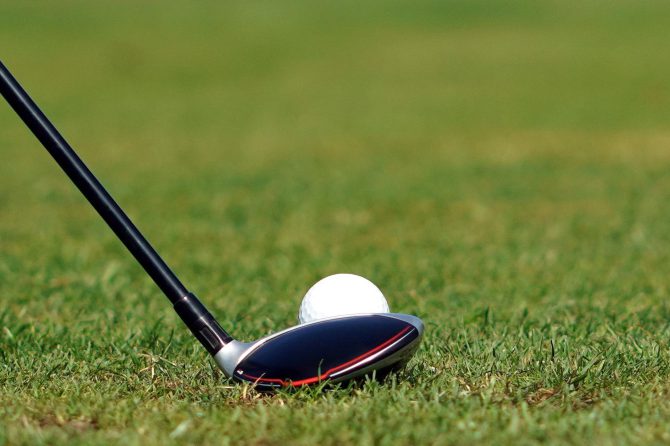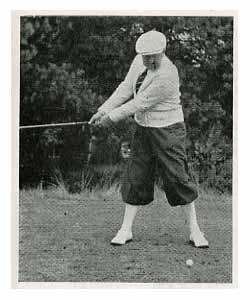The study of biomechanics in golf has garnered notable interest as players strive to improve their performance through a scientific understanding of human movement. Among the top competitors, Dustin Johnson is notable not only for his remarkable tournament wins but also for his unique swing mechanics, which illustrate the blend of athleticism and technique. This article explores the biomechanical insights that form the basis of Johnson’s golf swing, shedding light on the kinematic and kinetic elements that contribute to his extraordinary power and accuracy.
By closely examining Johnson’s grip, posture, and swing dynamics, we can uncover the intricate relationship between physical attributes and coordination that defines his success on the golf course. This analysis aims to provide golfers and coaches with practical insights grounded in scientific principles, emphasizing the importance of personal customization in mastering one’s swing, a hallmark of Johnson’s approach to the game. Ultimately, this research seeks to enhance understanding of a leading player’s methods while empowering golfers at all levels to refine their techniques and maximize their potential on the course.
Biomechanical Foundations of Effective Golf Swing Mechanics
The core components of Dustin johnson’s golf swing are firmly rooted in biomechanical principles that enhance both power and control.A key concept is **kinematic sequencing**, where body segments—legs, hips, torso, and arms—move in a synchronized manner to achieve maximum clubhead speed. This efficient energy transfer is crucial and involves several key phases:
- Takeaway: Smoothly initiating the swing to establish rhythm.
- Backswing: Rotating the shoulders and hips while maintaining balance.
- Downswing: Accelerating the lower body before the upper body to utilize ground reaction forces.
- Follow-through: Completing the swing while keeping body alignment intact.
Muscle activation patterns also play a significant role in the effectiveness of Johnson’s swing.The **kinetics** involved emphasize the engagement of large muscle groups, especially in the lower body, to provide stability and force. Research indicates that during the downswing, rapid activation of the gluteus maximus and quadriceps occurs before upper body movement, enhancing power output. The following muscle groups and their functions exemplify this:
| Muscle Group | Function in Swing |
|---|---|
| Gluteus Maximus | Stabilizes hips and generates torque |
| Quadriceps | Supports lower body stability |
| Core Muscles | Facilitates upper body rotation |
Additionally, maintaining optimal **joint angles** throughout the swing is essential for achieving consistency and accuracy. Johnson’s ability to control these angles—especially at the shoulders, hips, and wrists—enables precise clubface positioning at impact. Understanding these **angles** and their optimal ranges is crucial for enhancing individual performance. Coaches can utilize this knowledge to tailor training programs that promote body mechanics specific to a golfer’s physical attributes,leading to improved swing techniques and overall performance efficiency.
Examining Grip Techniques for Improved Performance
Mastering grip techniques is vital for enhancing performance in golf, and analyzing Dustin Johnson’s approach reveals several key factors. His grip style merges strength and finesse, allowing for both power generation and precision. By adopting a slightly stronger grip, Johnson ensures that the clubface remains square throughout his swing, which is crucial for accuracy. This grip facilitates a powerful energy release during the downswing, resulting in extraordinary driving distances.
Key aspects of Johnson’s grip technique include:
- Hand Placement: Johnson positions his hands to optimize leverage and control, contributing to a stable base for his swing.
- pressure Distribution: He maintains consistent pressure in both hands, enhancing club control and minimizing unwanted rotation during impact.
- Finger Positioning: The way he curls his fingers around the grip promotes better engagement with the club,aiding in executing complex swing mechanics.
Moreover, each golfer’s grip can be personalized to reflect their unique biomechanics. A thorough analysis of grip techniques can help golfers tailor their approach to ensure optimal synergy between grip and swing mechanics. The following table summarizes how variations in grip styles can influence swing outcomes:
| Grip Style | Impact on Swing | Recommended For |
|---|---|---|
| Neutral Grip | Balanced control and accuracy | players seeking consistency |
| Strong Grip | Increased power and distance | Long hitters like Johnson |
| Weak Grip | Promotes fade and shot shaping | More advanced players |
Enhancing Stance and Alignment for Consistent Ball Striking
Understanding the biomechanics of stance and alignment is crucial for achieving consistent ball striking in golf. Dustin Johnson exemplifies how proper body positioning can lead to improved performance. An optimal stance lays the groundwork for a powerful swing by ensuring that the golfer is balanced and aligned with the target. Key elements of Johnson’s stance include:
- Foot position: Feet shoulder-width apart for stability.
- Knee Flex: A slight bend in the knees to facilitate a dynamic swing.
- Weight Distribution: Balanced weight across both feet, allowing for effective weight transfer during the swing.
alignment is equally critically important, as it dictates the trajectory and accuracy of the shot. johnson demonstrates a commitment to precision in his alignment, contributing to his remarkable consistency.Factors influencing alignment include:
- Target Line: The clubface should align squarely towards the target at address.
- Body Alignment: Shoulders, hips, and feet need to be parallel to the target line.
- Ball Position: The ball’s placement varies with the club used; for instance, it’s positioned slightly forward for the driver and centered for shorter clubs.
incorporating these principles into practice can yield significant performance benefits. The following table summarizes the essential stance and alignment adjustments based on dustin Johnson’s techniques:
| Aspect | Optimal Setting |
|---|---|
| Foot Position | Shoulder-width apart |
| Knee Flex | Slight bend |
| Weight Distribution | Evenly distributed |
| Body Alignment | Parallel to target line |
| Ball Position (Driver) | Forward in stance |
| Ball Position (Short Clubs) | Center of stance |
Enhancing Core stability in Golf for Greater Power and Control
Core stability is vital for maximizing the power and control of a golfer’s swing, and it is essential for players like Dustin Johnson. Engaging the core not only improves balance and stability but also facilitates an efficient energy transfer throughout the swing mechanics. Activating core muscles during the swing allows for better rotational movement, crucial for generating clubhead speed and precision. Key muscles involved in core stability include:
- Rectus Abdominis: Supports trunk flexion during the downswing.
- Obliques: Aid in rotation and lateral stability.
- Transverse Abdominis: Acts as a primary stabilizer, preventing excessive lumbar spine movement.
To effectively incorporate core workouts into a golfer’s training regimen, it is essential to integrate specific exercises targeting these muscle groups. Research suggests that practicing core stability exercises can enhance swing mechanics and reduce injury risk. Common exercises designed for this purpose include:
| Exercise | Description |
|---|---|
| Plank | Enhances trunk stability while engaging multiple muscle groups. |
| Russian Twists | Improves rotational strength crucial for an effective golf swing. |
| Medicine Ball Slams | Builds explosive power and effectively engages the core. |
Furthermore, understanding the biomechanics of core engagement is essential for golfers looking to enhance their performance. A strong core allows for a more athletic stance and promotes a more powerful and controlled swing. By stabilizing the pelvis and spine through core activation, golfers can achieve greater consistency in their shots. Practicing the aforementioned exercises while focusing on maintaining proper posture and alignment can lead to noticeable improvements in swing efficiency, enabling golfers to perform at their best, akin to the techniques employed by elite players like Dustin Johnson.
Incorporating Mental Focus and Visualization in Biomechanical Training
The integration of mental focus and visualization in biomechanical training is crucial for enhancing performance in golf. As athletes like Dustin Johnson demonstrate, the synergy between mental strategies and physical mechanics can significantly optimize swing efficiency and overall game execution. To achieve heightened awareness and concentration, golfers can employ techniques such as:
- Pre-Round Mental Warm-ups: Engaging in focused breathing and visualization exercises to establish a clear mindset.
- Routine Visualization: Imagining successful swings to create a mental blueprint that can be recalled during play.
- Post-Round Reflection: Analyzing performance through a mental lens to identify areas for advancement.
Research indicates that engaging the mind through these practices not only boosts confidence but also enhances the body’s biomechanical responses during the game. Properly engaging the brain’s cognitive pathways can improve muscle memory and coordination.A well-structured visualization routine can lead to tangible benefits in biomechanics, including:
- Improved Swing Mechanics: Visualizing the perfect swing can solidify muscle memory.
- Increased Stability: Mental imagery can assist in maintaining core stability throughout the swing.
- Enhanced Timing: Visualization aids in synchronizing the various phases of the swing.
To effectively integrate these elements, training regimens can be developed that emphasize both physiological and psychological aspects. A potential framework for this integration could include:
| Activity | Description |
|---|---|
| Mental Imagery Sessions | Dedicated practice time focused solely on visualizing swings and course management. |
| Biomechanical Analysis | Utilizing technology to assess physical movements and align them with mental strategies. |
| Feedback Loops | Implementing reflections post-practice to analyze what worked well and what needs adjustment. |
By seamlessly merging these mental techniques with biomechanical training, athletes can not only develop their physical skills but also cultivate a resilient mindset geared towards peak performance.
The examination of Dustin Johnson’s technique reveals a complex interplay of biomechanical principles and cognitive processes that underpin his performance on the golf course. His distinctive grip, posture, and swing mechanics not only contribute to his remarkable power and accuracy but also serve as a model for aspiring golfers looking to enhance their own techniques. The focus on fundamental principles combined with personal customization reflects a progressive instructional approach that empowers players to adapt and refine their swings to align with their unique attributes.
Moreover, understanding the biomechanics involved in Johnson’s swing provides critical insights into the role of physical conditioning and core strength, as highlighted in contemporary literature.As aspiring golfers continue to seek ways to emulate Johnson’s success, it becomes clear that mastery of the game requires more than mere imitation; it necessitates a deep understanding of the movements and cognitive strategies that facilitate optimal performance. Thus,as we analyze and apply these biomechanical insights,we stand to not only enhance our own golfing abilities but also contribute to the ongoing evolution of instructional methodologies in the sport.
Ultimately, Dustin Johnson epitomizes the modern golfer—a blend of raw talent, technical precision, and a commitment to lifelong improvement, encouraging all golfers to diligently engage with the science and art of their craft.





